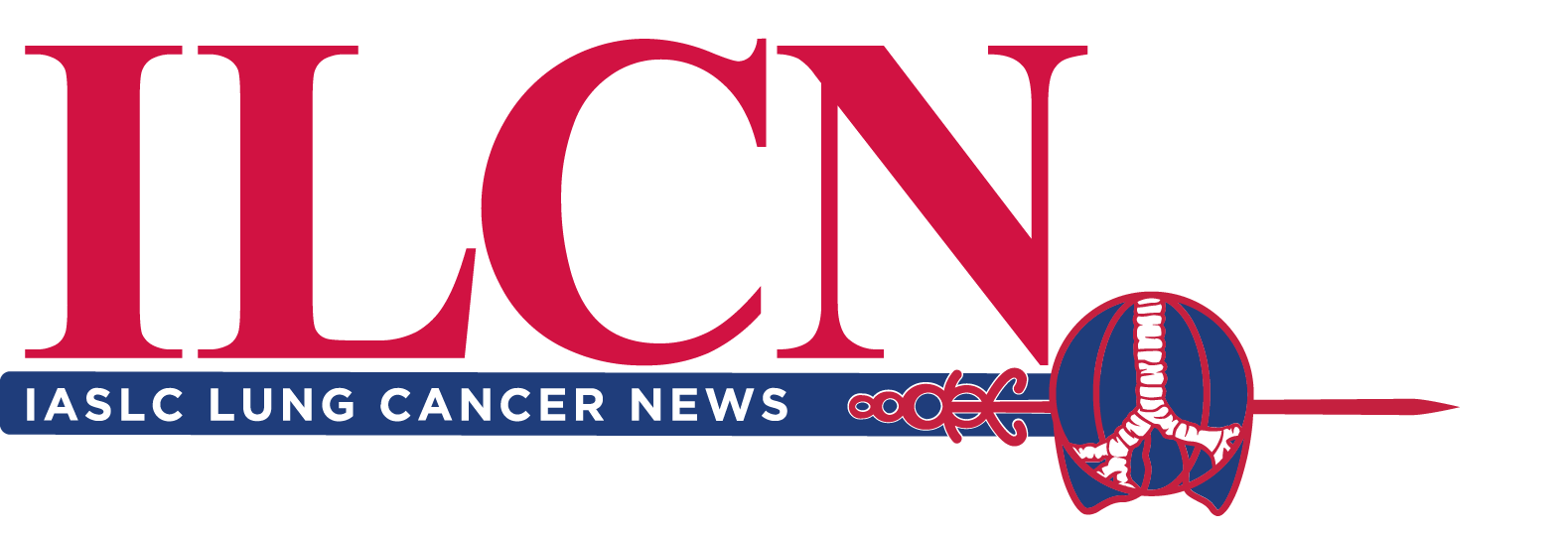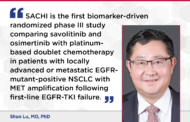In September 2017, the FDA approved bevacizumab-awwb for the treatment of NSCLC, with the same indications as the tradename agent. Although bevacizumab-awwb is the only biosimilar agent specific to lung cancer, there are many others in development. Gary Lyman, MD, is Professor of Public Health Sciences and Clinical Research at the Fred Hutchinson Cancer Research Center and Professor of Medicine, Public Health and Pharmacy at the University of Washington. Dr. Lyman has been very involved in providing education about biosimilars for the past 3 or 4 years at major medical professional meetings and has noticed the same attendees at the many sessions. He has noted that many in the clinical community have not had any real exposure to biosimilars until these agents started to enter into routine practice. According to Dr. Lyman, “being the first one on your block to use a new agent to treat a responsive and curative population means that you will have some questions.” In an effort to address some of the most common questions Dr. Lyman has been asked, ILCN is running a two-part interview with him to explain the regulatory process and offer insights about data interpretation for biosimilars. Part 2 addresses obstacles to adoption, including physician perception.
ILCN: To start with probably the most important point in patient care, are the side effects always the same between the reference drug and the biosimilar?
Dr. Lyman: The short answer is Yes: They are essentially the same. I can understand concern, or at least some confusion, because the safety data are not as extensive at the time of approval for biologic agents as they were for the original biologic or for other new agents receiving investigational new drug approval.
I think we all have to admit that, despite what is a very rigorous and thoughtful process that has been put in place for regulatory approval of biosimilars, rare or very delayed adverse events may surface after the completion of the studies or of approval itself. Therefore, we all need to be vigilant. The U.S. Food & Drug Administration (FDA) monitors this in the form of pharmacovigilance after approval, with the recognition that there still could be rare or delayed adverse events, that might show up. If these delayed events surface, we want to know about them quickly, track them, see if there are other cases of the same delayed events, and notify clinicians of the issue.
The good news, from my standpoint, is that biosimilars have been in used in Europe for more than a decade, and they have many more biosimilars approved than we have here in the United States. To my knowledge, none of those biosimilars have been red-flagged as having exceptional or concerning toxicities that would lead to their removal or to black-box warnings. When the first biologic therapies emerged approximately 20 years ago, our ability to perform a granular structural and functional characterization was far more limited than it is today. Whereas today, when a biosimilar goes through this process, it is analyzed by a vast array of analytic methods—more than 60 assays are used to compare biosimilars with their originators to demonstrate a high degree of similarity.
On top of that, careful pharmacokinetic and pharmacodynamic studies are performed in healthy volunteers to ensure that these drugs not only look the same and are characterized the same but that they actually behave the same in healthy humans. It is important to note that biosimilars are biologic agents—proteins—that may elicit an immune response, as do the originator agents. Testing is performed to ensure that, if antibodies are formed that they are not neutralizing antibodies, which would actually inhibit the functional ability of the molecule to do what it is supposed to do and that no serious allergic reaction occurs.
ILCN: If side effects are similar, why are clinical oncologists concerned about these agents?
Dr. Lyman: The FDA approach for biosimilars is to look at the totality of evidence developed across the preclinical work—this molecular characterization and functional characterization—and the early clinical work—pharmacokinetics, pharmacodynamics, and immunogenicity. After doing all of that, the FDA has the prerogative, and has often exerted that prerogative, to require further comparative clinical testing. For proteins such as granulocyte colony-stimulating factor (G-CSF) that have multiple biosimilars and for those biosimilar agents that have been in use for 4 years or more, the FDA has relaxed requirements for comparative equivalents of noninferiority studies for supportive care drugs. (An interesting side note regarding G-CSF biosimilars is that our surveys indicate that the majority of patients currently receiving G-CSF biologic agents are probably receiving biosimilars.)
However, the FDA is not ready to relax requirements for review of large monoclonal antibodies such as trastuzumab, rituximab, and bevacizumab as they are more complex molecules and utilized for actual cancer treatment. These agents also go through detailed structural and functional characterization, but their use in practice is one for treating the cancer, not just supporting the patient going through cancer treatment. An error with a monoclonal antibody could influence the ability to effectively treatment or even cure the cancer; whereas, with supportive care, the downside would be an increased number of side effects that would not necessarily be life threatening. Understandably there is greater concern among my clinical colleagues for these large monoclonal antibodies use for cancer treatment. The FDA’s approach to approving these newer cancer-treatment biosimilars is to, again, look at the totality of evidence. This starts with that extensive molecular characterization, the early clinical work, but then, the agency has required comparative clinical trials in which the biosimilar agent is compared to the originator to ensure that there are no safety signals that emerge and that the efficacy, whatever the clinical endpoint is or the agent’s major indication, is not inferior or superior to the originator.
ILCN: Why is it a problem if a biosimilar agent is actually more efficacious than an originator? Doesn’t this provide oncologists with more therapeutic choice?
Dr. Lyman: This is a very interesting part of the overall story of biosimilar agents. I will use SB3, which is one of the latest biosimilar agents in breast cancer that mimics the HER2 inhibitor trastuzumab. A comparative clinical trial was done for SB3 in what was considered the most sensitive population, patients with early-stage breast cancer. Other biosimilar agents for trastuzumab have been tested in patients with metastatic disease which was considered to be safer. The study population chosen in the SB3 comparative trial consisted of patients who were receiving neoadjuvant chemotherapy pre-resection. Using this framework, data can be collected on both objective pathologic response of the primary tumor before surgery as well as PFS and OS. As the study went on, an unexpected result emerged: the biosimilar appeared to actually be somewhat more efficacious than the originator. The results did not quite reach statistical significance but were close enough to raise concern, because the FDA criteria for approving a biosimilar is that the biosimilar agent cannot be worse than the originator, but it also cannot be better than the originator. The rationale for this stipulation being that if the biosimilar agent is really significantly better than the originator, it probably should be considered a new drug and go through additional clinical trials to approve it for use in practice.
The developer of SB3 collected batches of originator trastuzumab from the previous 2-3 years and tested them against SB3 for a range of functional characteristics that are thought to be relevant to the mechanism of action of trastuzumab. For batches from within a certain time period, several comparison criteria including antibody-dependent cellular cytotoxicity (ADDC) fell outside boundaries that the FDA had established, leading to the question of whether SB3 was actually superior or whether the quality of originator trastuzumab had fallen below acceptable criteria. As manufacturing and production changes are routinely checked both by the company and by the FDA, it was unclear how this “drift” in functionality had occurred. By “drift” we mean some aspect of the molecule or its functional ability has changed over time because of new components, processes or manufacturing facilities.
In order to evaluate this further, a retrospective analysis was performed thatwas reported originally at the 2019 ASCO Annual Meeting and, at 4 years follow up, at this year’s ASCO Virtual Meeting as a poster. A significant improvement in OS for patients who received SB3 was observed compared to patients who received the drifted trastuzumab—that is, trastuzumab where the functionality had gone below acceptable standards. However, the decreased survival was not true for the non-drifted batches where survival and pathologic complete remission was the same. Fortunately, the most recent batches of trastuzumab that were analyzed had acceptable ADDC levels, meaning that the drift had been corrected at some point.
I often argue that a monoclonal antibody today on a pharmacy shelf is not the same product as a version of the agent 20 years ago, when it was first approved by the FDA. Fortunately, most of those changes that occur over time are minor and have no impact on either efficacy or safety. But what the above scenario has shown is that sometimes drift and/or changes to a biologic agent may have a meaningful and potentially serious reduction impact on efficacy and safety of either an originator or a biosimilar. Industry and regulators must be very vigilant of the change, or drift, in these molecules over time. Although we have been very concerned about this issue related to biosimilar agents, we know now that we need to be equally concerned such changes in the originators. I have talked about drift for years when I have talked about biosimilars but always hypothetically. Now we know that it can really happen in actual practice.
References:
- Lyman GH, Zon R, Harvey, RD, Schilsky RL. Rationale, opportunities, and reality of biosimilar medications. NEJM. 2018;378:2036-2044.
For Further Reading:
• Stebbing J, Mainwaring PN, Curigliano G, et al. Understanding the role of comparative clinical studies in the development of oncology biosimilars. J Clin Oncol. 2020;38(10):1070-1080.
• Lüftner D, Lyman GH, Gonçalves J, Pivot X, Seo M. Biologic Drug Quality Assurance to Optimize HER2 + Breast Cancer Treatment: Insights from Development of the Trastuzumab Biosimilar SB3. Targeted Oncol. 2020;15:467-475.
• Lyman GH and Kuderer N. Rumors of the Death of Biosimilars Have Been Greatly Exaggerated. Cancer Investigation. 2019;37(8):325-326.
• Lyman GH. How Biosimilars Will Impact Costs and Care in Oncology. Clinical Advances in Hematology & Oncology. 2019;17(10):544-547.
• Pivot X, Pegram M, Cortes J, et al. Three-year follow-up from a phase 3 study of SB3 (a
• trastuzumab biosimilar) versus reference trastuzumab in the neoadjuvant setting for human epidermal growth factor receptor 2-positive breast cancer. Eur J Cancer. 2019;120:1-9.
• Pivot X, Bondarenko I, Nowecki Z, et al. Phase III, Randomized, Double-Blind Study Comparing the
• Efficacy, Safety, and Immunogenicity of SB3 (Trastuzumab Biosimilar) and Reference Trastuzumab in Patients Treated With Neoadjuvant Therapy for Human Epidermal Growth Factor Receptor 2–Positive Early Breast Cancer. J Clin Oncol. 2018;36(10):968-974.






